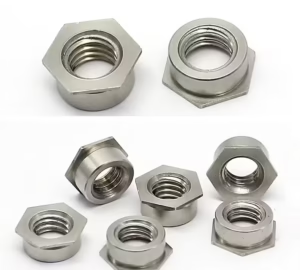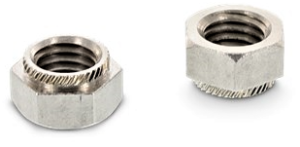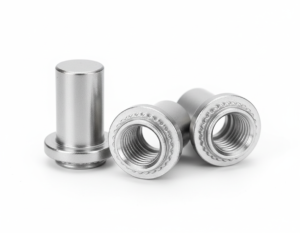Description
Pilot pin fasteners are cylindrical components designed to act as guides during the alignment of parts or fixtures. They are typically inserted into pre-drilled holes or mating parts to ensure that components are aligned correctly before final fastening or welding takes place. The name “pilot pin” comes from their guiding function — they “pilot” the way for other parts to come together seamlessly.
These pins are usually made from high-strength materials such as stainless steel, tool steel, or hardened alloy steels, depending on the application’s load and environmental requirements. Some pilot pins are permanently installed, while others are removable or retractable for temporary use during maintenance or assembly.
Design and Structure of Pilot Pin
Pilot pin fasteners come in several shapes and configurations, including:
-
Tapered Pilot Pins: Featuring a conical or tapered end that facilitates easy entry into the mating hole. These are especially useful when there is slight misalignment.
-
Straight Pilot Pins: Cylindrical throughout, they provide strong, precise guidance when parts are already fairly well aligned.
-
Shoulder-Type Pilot Pins: Include a shoulder or collar to control the depth of insertion, ensuring consistent positioning.
-
Spring-Loaded Pilot Pins: Allow for retraction and are used in applications where temporary engagement is required.
Depending on the industry and usage, pilot pins can also feature knurled bodies, threaded ends, or heads for easier handling and mounting.
Applications of Pilot Pin Fasteners
1. Welding Fixtures
One of the most common uses of pilot pin fasteners is in welding fixtures, especially in automotive body assembly lines. These pins help to position the metal sheets or components precisely before the welding operation begins. Misalignment in welding can lead to defects, structural weakness, or improper vehicle body geometry. Pilot pins ensure that every part aligns consistently, contributing to high-quality and efficient production.
2. Machining and Tooling
In CNC machining or jig and fixture systems, pilot pins ensure the repeatable and precise location of workpieces. They act as reference points, allowing for the accurate placement of a part relative to the cutting tool or other components.
3. Die and Mold Alignment
In plastic injection molding or die casting, pilot pins align the mold halves correctly. This ensures that the molded parts are accurate and have consistent dimensional tolerances. Improper alignment can cause flashing, part deformation, or tool damage.
4. Automotive and Aerospace Assemblies
Pilot pins are used to align engine components, brackets, panels, and structural assemblies. In aerospace, where tolerances are extremely tight, pilot pins ensure perfect alignment of fuselage sections, wing components, or interior fittings, reducing the chances of failure under stress or pressure.
5. Sheet Metal Fabrication
In stamping operations or sheet metal joining, pilot pins help align the sheets or dies before the press operation. This avoids waste and ensures that all holes, bends, or cuts occur in the correct location.






Reviews
There are no reviews yet.